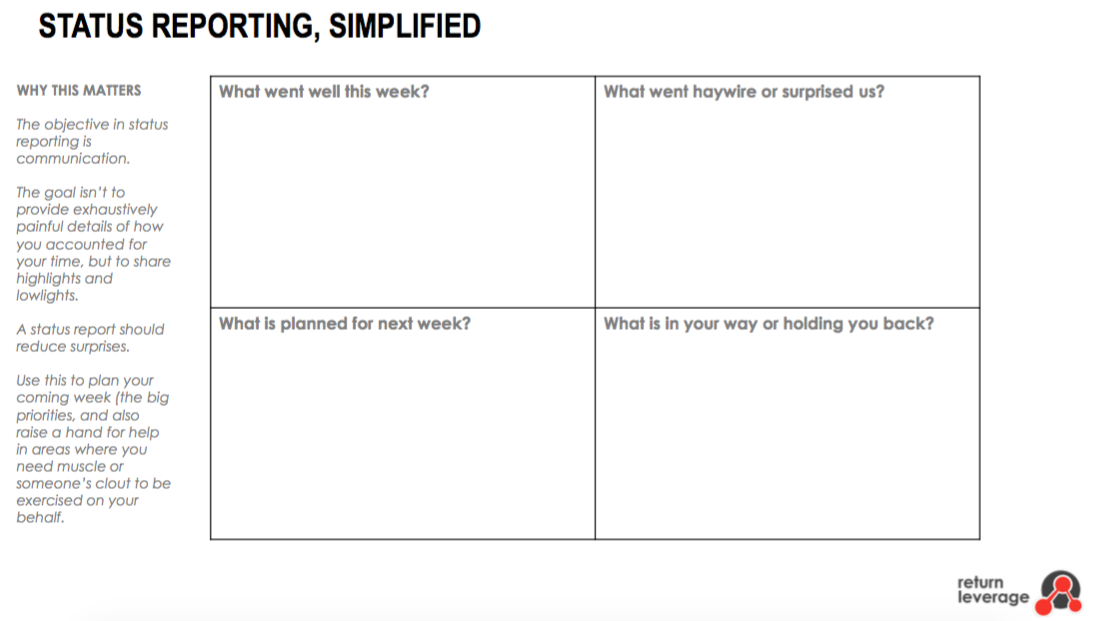Quit Blowing Project Deadlines
It’s easy to procrastinate work when clear, communicated deadlines don’t exist.
There’s no urgency, so people put the least desirable tasks on the bottom of the to-do list and instead tackle the low-hanging fruit or the work they enjoy. This kicks that thing we don’t enjoy, but that needs to get done, further down the road.
In time, the urgency builds as the drop-dead, go-live, or launch date looms. Teams are then left scrambling. This isn’t fun nor does it allow us to produce our best work.
“In publishing, the entire organization is aligned on one thing: delivering the next publication on time. Corporations can take some lessons from this aligned, singularly focused approach to project execution.”
As I transitioned to the business world from years in online publishing and magazine this cycle was the most noticeable culture difference.
Within a monthly publication, work has to be planned over the course of the month-long cycle or it doesn’t happen. It’s simply impossible to coordinate with all of the other external stakeholders to secure revenue, product images, stock photography, illustrations, freelance content, and ads.
The expectation for consistent output not only allowed me to feel less stress as proofing week approached, but also taught me to work on things even when I didn’t ‘feel like it.’ I knew that some work was better than no work and that even if I started all over the next day, progress was made.
Projects fail for a multitude of reasons. Without a committed and agreed schedule, the project at best is delivered late, and at worst it doesn’t happen at all.
When organizations invest resources, both monetary and human capital into an area of work, it’s likely because they want it to get done.
So, how do project leaders ensure that happens? I’ll share a few tricks publishing teams use to schedule output that’ll help you and your teams manage projects. With this diligence, you’ll never miss another deadline that’s in your power to control.
Photo by Water Journal on Unsplash
Know the task at hand
In publishing this is called an editorial calendar. A year in advance, yes, content is scheduled out for months to a year in advance for print publications.
The team gets together to brainstorm collectively, and include the ideas of freelance and regular contributors in the discussion. As ideas are chosen, they’re added to the calendar where they’re seasonally relevant and where it’s known there’s staff or freelance writers to cover it.
As corporate projects begin, have a similar working-session conversation to plan a path to execution before the real work begins.
Ask:
- What are we trying to accomplish in the next year?
- How does this project (or, is it aligned?) align with our mission statement or business strategy?
- What are the dates of expected delivery?
- And, who is needed to accomplish this work?
If you can’t answer these key questions then you aren’t ready to start the project. If you have a non-negotiable timeline, then communicate to your team the urgency of the decisions. Or, if this is unrealistic, consider the three project constraints: if schedule is fixed for example, can you adjust the scope or budget to get the project done?
Build in time to ‘Proof’
Writers aren’t perfect, editors aren’t perfect, and neither are graphic designers.
Editorial teams always schedule time to proof the materials several times before it goes to print. You read that right, SEVERAL TIMES! It ensures that the team has time to catch and correct every comma splice and omitted word, and then complete a final pass-through to look for small details, such as extra spaces between sentences.
Proofing is similar to UAT in a technology project.
- Does the tool work like we expect it to?
- What needs to change or improve before we can consider the project complete?
If the project’s a building move, the team or project manager will likely do a final walk-through to check for left-behind items, or to remind themselves to, “Oh yeah! Give the cleaner the okay to deep-clean the facility before the next tenant moves in.”
If the project is to be complete at a certain date and you plan to build, code, move, or complete work up to that date, it doesn’t give you time to complete last-minute final touches (or revisions).
Work with your stakeholders up-front to first understand who needs to complete the final review, and provide a reasonable amount of time needed to do it.
For example, it’s unreasonable to test an entire ERP system in a day. And, if you ask someone to meet that deadline, don’t expect the review to be thorough.
If your team has invested to do good work, respect yourself, the contributors, and the stakeholders enough to allow everyone time for a final testing and revision before it’s called complete.
Work backwards
After you’ve developed your outline--or project task list, or work breakdown structure (WBS)--schedule deliverables backwards from when your test or proof time should begin. If there are dependencies, schedule the dependent tasks accordingly (or closest to your due date) and pull critical tasks earlier in your project if you can.
Set weekly achievable deliverables to ensure that you and your team aren’t overwhelmed throughout the lifecycle of the project. Progress should move ahead like a steady beating drum, not at the beat of your favorite drum solo. Another bad project metaphor (because writer-types are good for this terrible humor): Have you heard the story of the tortoise and the hare? Be the tortoise.
As you schedule these realistic goals, overestimate the amount of time a given task will take. Various approval processes, competing priorities, resource constraints, miscommunications, and sick and vacation days happen. So protect yourself ahead of time so that you aren’t forced to pull an all-nighter to get back on schedule.
Make contributors accountable
Let’s assume you have adequate resources for the project you’ve undertaken and that you’ve successfully assigned each of your weekly deliverables to an individual contributor, or at the very least a team. As long as these resources know their role, the project lead or manager should hold them accountable.
If you’ve assigned tasks to your contributors, it means you trust that they’re competent enough to do the work. So, let them.
Don’t micromanage their schedule or approach so long as the delivery meets the criterion that’s been outlined in your task list and pre-project meetings. They’ll appreciate the autonomy and will be more productive.
Check-in regularly
Though the schedule and roles have been communicated upfront, it’s your job as the leader to keep an up-to-date status on the project. Not only to report out to your supervisor, but to enhance transparency and productivity. Stay engaged through the entirety of the initiative to show your team that you care and are invested in their success and the success of the project.
There are a few ways to do this. Find something that works for you and your team and be consistent. Consistency is better than perfection.
A status report can be as simple as this. Download this simple template.
- Status report – Weekly report out from each team member that shares what’s been accomplished this week, what’s on the docket for the upcoming week, and any roadblocks or challenges. If you can step in and remove roadblocks for your team, do. If not, work with them to determine how you can keep progress moving.
- Stand-ups – Short, often daily, report out where each team member literally stands and shares what’s on the to-do list for the day.
- Team meetings – In-person or call-in weekly and/or monthly group meeting to share what’s been accomplished and what’s on the to-do list for the upcoming week or month. This saves the manager time, but at the expense of other contributors’ time (if the information shared is irrelevant). However, it does enforce transparency.
- One-on-one – Similar to the team meeting, but the project lead(s) check-in with contributors face-to-face or by phone to learn what’s been accomplished and what’s on the to-do list. This isn’t efficient for the manager, but allows individual contributors’ time not to be wasted in a long meeting. It doesn’t foster transparency though, and can lead to siloed information and miscommunication.
Getting everyone moving toward a common goal isn’t always easy in the corporate environment, but the results are worth the effort.
Alexis Bennett is a member of the Return Leverage team, and (surprise!) a Millenial. She got her start in business pedaling homemade calendars to her neighbors, and has been “bulldogging” people ever since. Her experience in publishing, contributing as an on-staff editor and freelance writer for Web and print publications, and consumer brands, such as Bodybuilding.com, the American Quarter Horse Association, Horse&Rider Magazine, NRHA ProTrainer, Cashel, and others, allows her to help clients improve communication across teams, departments, and organizations.



